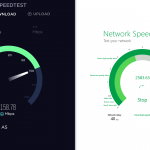The Internet is a global network of the internet is a global system. It connects several billion devices around the world using the standard Internet protocol suite (TCP/IP). It is a network of networks made up of millions of private, public, educational, business, and government networks ranging in size from local to worldwide. All of which are connected by a range of technological, wireless, and optical internet connections.
The Internet hosts a diverse set of information resources and services, including the World Wide Web’s (WWW) interconnected hypertext pages and applications, email infrastructure, and peer-to-peer networks for file sharing and telephony.
The Internet’s origins can be traced back to research commissioned by the US government in the 1960s to develop reliable, fault-tolerant computer networks. This work, together with efforts in the United Kingdom and France, resulted in the creation of the ARPANET. The United States’ principal predecessor network.
In the 1980s, the linking of regional academic networks marked the start of the shift to the contemporary Internet. As generations of institutional, personal, and mobile computers were joined to the network beginning in the early 1990s. It enjoyed persistent exponential development.

Global Internet
The Internet is reshaping or redefining most traditional communications channels, including telephone and television. And giving rise to new services like voice over Internet Protocol (VoIP) and Internet Protocol television (IPTV). Newspapers, books, and other forms of print media are adapting to website technology. Or reshaping themselves into blogging and web feeds.
The entertainment industry, which includes music, movies, and video games, was the fastest expanding Internet market at first. Through online communication, Internet forums, and social networking, the Internet has enabled and accelerated new forms of human interaction. Both huge shops and small artists and traders have seen explosive growth in online buying.
Global Network Governance
The Internet is a geographically distributed network made up of several self-contained autonomous networks that are connected voluntarily. It does not have a centralized governing body.
The Internet Engineering Task Force (IETF), a non-profit organization of loosely associated multinational players. That anyone can associate with by giving technical skills, is responsible for the technical basis. And standardization of the basic protocols (IPv4 and IPv6).
The Internet Corporation for Assigned Names and Numbers (ICANN). Located in the Playa Vista neighborhood of Los Angeles, California, manages the major namespaces of the Internet to ensure interoperability.
For the Internet to maintain its worldwide reach, globally uniform namespaces. In which names and numbers are uniquely assigned, are required. The Internet Corporation for Assigned Names and Numbers (ICANN) is administered by a worldwide board of directors. Comprised of representatives from the technical, business, academic, and other non-commercial groups.
Satellite global networks
Global networks rely heavily on communication satellites. However, some low Earth orbiting (LEO) satellite navigation constellations. Such as Iridium, Globalstar, and Orbcomm, are made up of dozens of similar satellites. That are placed in orbit at regular intervals and form a mesh network. Sometimes sending and receiving data directly among themselves.
Also Read: 10 Most Valuable Internet Companies
Wireless mobile networks
The GSM standard, which is used in over 212 nations and territories, is projected to account for 80% of the global mobile market. Because of its widespread use, worldwide roaming between mobile phone operators is fairly frequent. Allowing customers to use their phones in many different locations throughout the world. These networks must be integrated through peering arrangements to do this, making the GSM network truly worldwide.
Interconnection of networks
Since the telegraph and telex cellular networks have been faded out. interconnectivity among existing worldwide networks has arisen at several locations, including between voice telephony and digital data networks, as well as between these and satellite networks. Many applications, such as VoIP, now run on many networks (voice over IP). Massive carrying capacity in the key backbones is required for digital global networks. Fiber optic cables are currently used to do this.
Global Internet Networks in Medical Field
In the area of medicine, one of the impacts of the Internet on our society is the research capabilities. It provides the general population, as well as the empowerment it provides patients and their families. Once upon a time, the patient or his family was only allowed a one-second opinion. Those who could (and still can) afford it are free to visit as many doctors as they choose.
The general public can see one “extra” specialist in total. Today, huge sources of information can be gleaned from the massive knowledge available on the “Internet”. The patient is much better prepared to talk to his doctor about his situation, comprehend his options, side effects, the most up-to-date treatments, and the statistical chances of success.
























